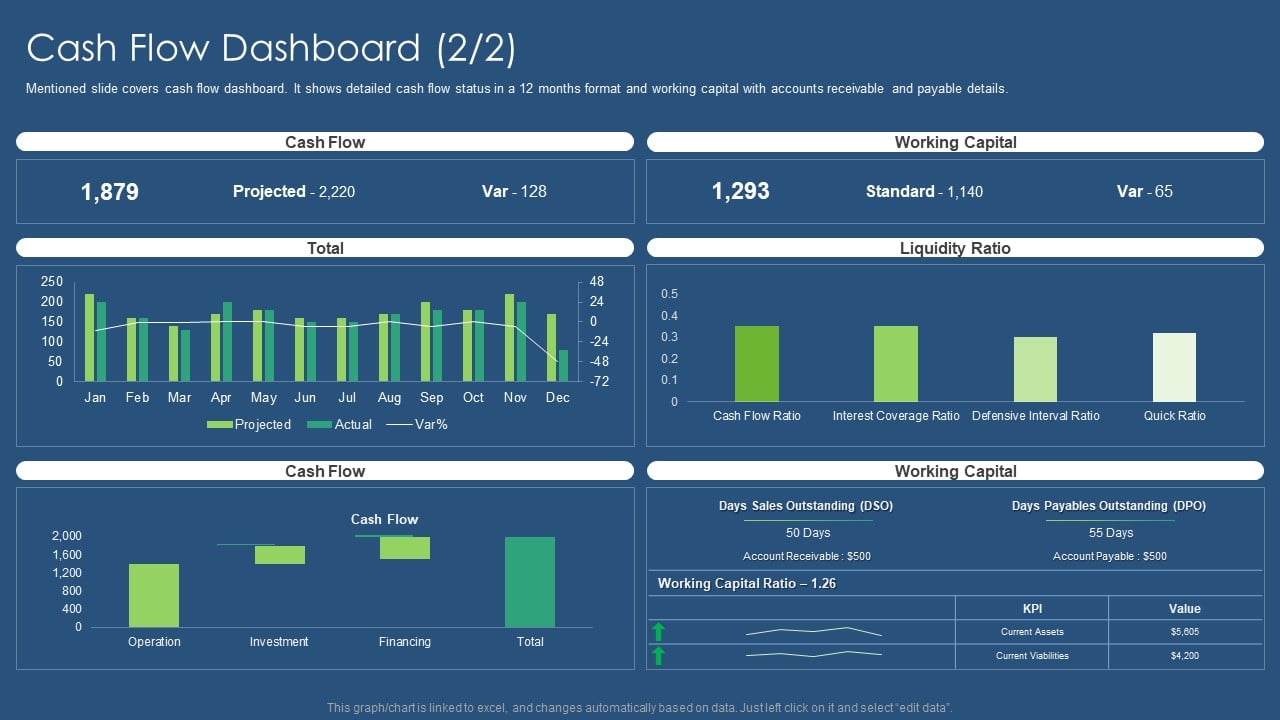

Finance
How To Finance Mergers And Acquisitions
Published: February 24, 2024
Learn how to finance mergers and acquisitions with expert tips and strategies. Explore the best financing options for successful business deals.
(Many of the links in this article redirect to a specific reviewed product. Your purchase of these products through affiliate links helps to generate commission for LiveWell, at no extra cost. Learn more)
Table of Contents
Introduction
Mergers and acquisitions (M&A) are pivotal strategies that businesses often employ to expand their market presence, streamline operations, or capitalize on synergies. The process involves one company combining with another through various financial transactions, leading to a significant transformation in the business landscape. Financing these transactions is a critical aspect that demands careful consideration and strategic planning.
In the realm of finance, M&A activities present unique challenges and opportunities. Understanding the intricacies of financing mergers and acquisitions is essential for businesses and investors aiming to navigate this complex landscape successfully. This article aims to shed light on the various financing options available for M&A transactions, providing insights into the distinct characteristics of each approach and the considerations that accompany them.
Navigating the world of finance can be daunting, especially in the context of M&A. However, with a comprehensive understanding of the available financing methods and their implications, businesses can make informed decisions that align with their strategic objectives. Join us as we explore the dynamic realm of financing mergers and acquisitions, uncovering the diverse pathways that organizations can traverse to facilitate transformative transactions.
Understanding Mergers and Acquisitions
Mergers and acquisitions (M&A) encompass the consolidation of companies or assets, often with the aim of fostering growth, gaining a competitive edge, or achieving operational efficiencies. In a merger, two separate entities unite to form a single, new organization, thereby combining their resources and capabilities. On the other hand, an acquisition involves one company acquiring another, leading to the absorption of the target company’s operations, assets, and liabilities.
These strategic initiatives can take various forms, such as horizontal mergers, where companies operating in the same industry merge to strengthen their market position, or vertical mergers, where businesses within the same supply chain integrate to streamline operations and enhance efficiency. Additionally, conglomerate mergers involve companies from unrelated industries joining forces, often to diversify their offerings and minimize risk.
From a financial perspective, M&A activities can create value through synergies, economies of scale, and expanded market reach. However, they also entail inherent risks, including financial uncertainties, cultural integration challenges, and regulatory complexities. As such, comprehending the nuances of mergers and acquisitions is crucial for all stakeholders involved, from executives and investors to employees and regulatory bodies.
By delving into the intricacies of M&A transactions, businesses can gain a deeper understanding of the strategic implications, financial considerations, and operational intricacies associated with these transformative endeavors. The next section will explore the diverse financing options available for mergers and acquisitions, shedding light on the distinct mechanisms through which these transactions can be funded.
Types of Financing for Mergers and Acquisitions
When embarking on mergers and acquisitions, companies have several financing options at their disposal, each with its unique characteristics and implications. Understanding these financing avenues is essential for businesses seeking to execute successful M&A transactions. The following are the primary types of financing utilized in the realm of mergers and acquisitions:
- Debt Financing: This approach involves borrowing funds to facilitate the M&A transaction. Companies can secure loans from financial institutions or issue corporate bonds to raise the necessary capital. Debt financing offers the advantage of leveraging borrowed funds to fuel growth and expansion, but it also entails repayment obligations and interest costs that can impact the acquiring company’s financial health.
- Equity Financing: In contrast to debt financing, equity financing involves raising capital by issuing shares of stock. This approach allows companies to procure funds without incurring debt, thereby bolstering their financial flexibility. However, equity financing dilutes ownership and can lead to a redistribution of control within the organization.
- Mezzanine Financing: Mezzanine financing combines elements of debt and equity financing, offering subordinate debt that can be converted into equity if certain conditions are met. This hybrid approach provides flexibility and can be an attractive option for companies seeking additional capital without relinquishing immediate equity stakes.
Each financing method presents distinct trade-offs and considerations, impacting the financial structure, risk profile, and ownership dynamics of the acquiring company. By carefully evaluating these options in the context of their strategic objectives and financial capabilities, businesses can chart a financing course that aligns with their long-term vision and growth aspirations.
Debt Financing
Debt financing is a common method used by companies to fund mergers and acquisitions, allowing them to leverage borrowed capital to facilitate strategic transactions. This approach typically involves obtaining loans from financial institutions or issuing corporate bonds to raise the necessary funds. Debt financing offers several advantages, including the ability to access substantial capital without diluting ownership or relinquishing control.
One of the primary benefits of debt financing is the potential for tax-deductible interest payments, which can enhance the overall cost-efficiency of the funding. Additionally, leveraging borrowed funds can enable companies to capitalize on growth opportunities, expand their market presence, and achieve economies of scale through strategic acquisitions.
However, it’s essential to recognize the inherent risks associated with debt financing for mergers and acquisitions. Taking on substantial debt can burden the acquiring company with repayment obligations, interest costs, and potential liquidity constraints. Excessive leverage can also impact the organization’s creditworthiness and financial stability, influencing its ability to pursue future growth initiatives.
Furthermore, the terms and conditions of the debt, including interest rates, maturity dates, and collateral requirements, can significantly impact the overall financial health and flexibility of the acquiring company. As such, prudent financial management and a comprehensive risk assessment are crucial when considering debt financing for M&A activities.
By carefully evaluating the benefits and risks of debt financing, businesses can make informed decisions regarding their capital structure and funding strategies for mergers and acquisitions. Balancing the allure of leveraging borrowed funds with the potential implications on financial stability and operational agility is paramount in navigating the complexities of debt financing in the context of strategic transactions.
Equity Financing
Equity financing serves as a prominent avenue for funding mergers and acquisitions, offering companies the opportunity to raise capital by issuing shares of stock. This approach provides businesses with a means to procure funds without incurring debt, thereby bolstering their financial flexibility and minimizing interest-related costs associated with traditional borrowing.
One of the key advantages of equity financing is its potential to enhance the acquiring company’s capital structure without imposing immediate repayment obligations. By offering ownership stakes in exchange for investment, companies can access substantial funding while aligning the interests of investors with the organization’s long-term performance and growth prospects.
However, it’s important to recognize the trade-offs associated with equity financing for mergers and acquisitions. Issuing additional shares of stock can dilute existing ownership stakes, redistributing control and potentially impacting the decision-making dynamics within the organization. This aspect underscores the need for careful consideration of the implications on corporate governance and strategic direction.
Furthermore, equity financing entails ongoing shareholder obligations, including dividend payments and shareholder communications, which can influence the financial commitments and transparency requirements of the acquiring company. Additionally, aligning the interests of new shareholders with the organization’s strategic vision and operational objectives is essential to fostering a cohesive and aligned corporate culture.
By weighing the benefits and considerations of equity financing, businesses can make informed decisions regarding their funding strategies for mergers and acquisitions. Balancing the advantages of financial flexibility and minimized debt burden with the potential implications on ownership dynamics and shareholder relationships is pivotal in navigating the complexities of equity financing in the context of transformative transactions.
Mezzanine Financing
Mezzanine financing represents a hybrid funding approach that combines elements of debt and equity financing, offering companies a versatile means of raising capital for mergers and acquisitions. This form of financing typically involves the issuance of subordinated debt, which ranks below senior debt in the capital structure, along with the potential for equity participation under specified conditions.
One of the key advantages of mezzanine financing is its flexibility, providing companies with access to capital while offering potential equity upside. This approach allows businesses to secure funding without immediately diluting ownership, offering an attractive alternative to traditional equity financing.
Mezzanine financing also provides investors with the potential for enhanced returns through equity participation, aligning their interests with the long-term success and growth of the acquiring company. This characteristic can foster a collaborative partnership between the company and its investors, aligning their incentives and objectives.
However, it’s essential to recognize the trade-offs associated with mezzanine financing. The subordinated nature of mezzanine debt implies a higher level of risk for investors, leading to higher interest costs and potentially more stringent terms compared to senior debt. Additionally, the potential for equity conversion under specified conditions introduces complexities in terms of ownership and control.
By carefully evaluating the benefits and considerations of mezzanine financing, businesses can make informed decisions regarding their funding strategies for mergers and acquisitions. Balancing the advantages of flexibility and potential equity upside with the implications on debt servicing and ownership dynamics is crucial in navigating the complexities of mezzanine financing in the context of transformative transactions.
Considerations for Financing Mergers and Acquisitions
When contemplating the financing of mergers and acquisitions, businesses must carefully evaluate a myriad of factors to ensure that their funding strategies align with their long-term objectives and financial capabilities. The following considerations are pivotal in navigating the complexities of financing transformative transactions:
- Strategic Alignment: It is essential to assess the extent to which the chosen financing method aligns with the strategic goals and operational requirements of the acquiring company. Whether prioritizing financial flexibility, minimizing interest costs, or preserving ownership control, the financing approach should harmonize with the overarching strategic vision.
- Risk Profile: Each financing method carries inherent risks that can impact the financial stability and flexibility of the acquiring company. Evaluating the risk-return trade-offs, debt-servicing obligations, and potential impact on creditworthiness is crucial in mitigating undue financial exposure.
- Financial Health: Understanding the implications of the chosen financing on the company’s balance sheet, cash flow, and capital structure is imperative. Assessing the potential impact on credit ratings, liquidity, and overall financial health is essential for prudent financial management.
- Ownership Dynamics: Considering the impact of the chosen financing on ownership stakes, control dynamics, and shareholder relationships is pivotal. Balancing the benefits of capital infusion with the potential implications on corporate governance and decision-making structures is essential.
- Regulatory Compliance: Comprehending the regulatory implications and compliance requirements associated with the chosen financing method is crucial. Ensuring adherence to applicable laws, disclosure obligations, and stakeholder communications is paramount for a seamless and compliant transaction.
By meticulously evaluating these considerations and aligning the chosen financing approach with the strategic imperatives and financial realities of the acquiring company, businesses can navigate the complexities of financing mergers and acquisitions with prudence and foresight.
Conclusion
Financing mergers and acquisitions is a multifaceted endeavor that demands astute financial acumen, strategic foresight, and a comprehensive understanding of the available funding options. The diverse pathways of debt financing, equity financing, and mezzanine financing offer businesses distinct mechanisms to fuel transformative transactions, each accompanied by unique benefits and considerations.
By delving into the intricacies of these financing methods, companies can chart a funding course that aligns with their strategic objectives, risk tolerance, and financial capabilities. Balancing the allure of leveraging borrowed funds with the potential implications on ownership dynamics, financial health, and regulatory compliance is pivotal in navigating the complexities of financing mergers and acquisitions.
Ultimately, the success of financing M&A transactions hinges on a judicious assessment of strategic alignment, risk profile, financial health, ownership dynamics, and regulatory compliance. By meticulously evaluating these considerations and aligning the chosen financing approach with the strategic imperatives and financial realities of the acquiring company, businesses can navigate the complexities of M&A financing with prudence and foresight.
In the dynamic landscape of mergers and acquisitions, the ability to leverage the appropriate financing mechanisms can catalyze growth, foster synergies, and unlock value for all stakeholders involved. With a nuanced understanding of the available financing options and their implications, businesses can embark on transformative transactions with confidence, positioning themselves for sustainable growth and enduring success in an ever-evolving marketplace.














